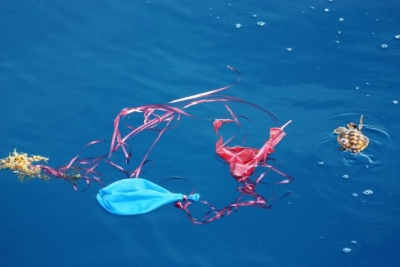
Balloons, glitters and confetti add colour to our celebrations. But did you know while we treat ourselves to these small pleasures, we inadvertently pollute Earth? After all, what goes up must come down. Free-flying balloons and confetti ultimately become litter and put animals and birds at risk.
Balloons
Balloons are of two types – latex and mylar. Although latex balloons are promoted as biodegradable, they take anywhere between six months and four years to decompose. Mylar balloons are composed of synthetic nylon with a metallic coating. They are non biodegradable.
Balloons (when released into the sky, say as part of events or campaigns) travel thousands of miles, capable of polluting the most remote and pristine places. Deflated balloons that settle on land and sea surface are mistaken for food and eaten by animals and birds. They get lodged in their digestive tract, causing obstruction, loss of nutrition, internal injury, starvation, and death. String or ribbon often found attached to balloons can cause entanglement in animals, again leading to their death. Animals such as sea turtles are at special risk because the balloons resemble their favourite food – jellyfish. Seabirds are not safe either. According to a study released in 2019, if a seabird swallows a balloon, it’s 32 times more likely to die than if it had gulped down a piece of hard plastic.
Glitter and confetti
Confetti has been used for thousands of years. The tradition can be traced back to the pagan times when people tossed grains and sweets during weddings and festivals. It has been adopted by many cultures around the world. But in recent years, it has taken a different form. We toss confetti and glitter at weddings and stage performances today, which simply disperse microplastics everywhere. Because confetti and glitter are made of plastic – polyvinyl chloride (PVC) and polyethylene terephthalate (PET), respectively.
Microplastics are plastic particles that are less than 5mm in diameter and are an emerging environmental issue. Glitter is usually less than 1mm in diameter and is used in a wide array of products, including cosmetics. It leads into the environment and often ends up in the oceans. It can be accidentally consumed by plankton, fish, shellfish, seabirds, and other marine life. When microplastic builds up in their systems, it can lead to death.
Further, PET, the plastic most glitter is made from, can break down and release chemicals that can disrupt human and animal hormones.
Picture Credit : Google










